World Bank in India
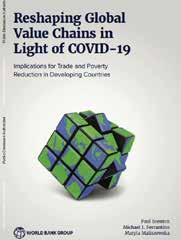


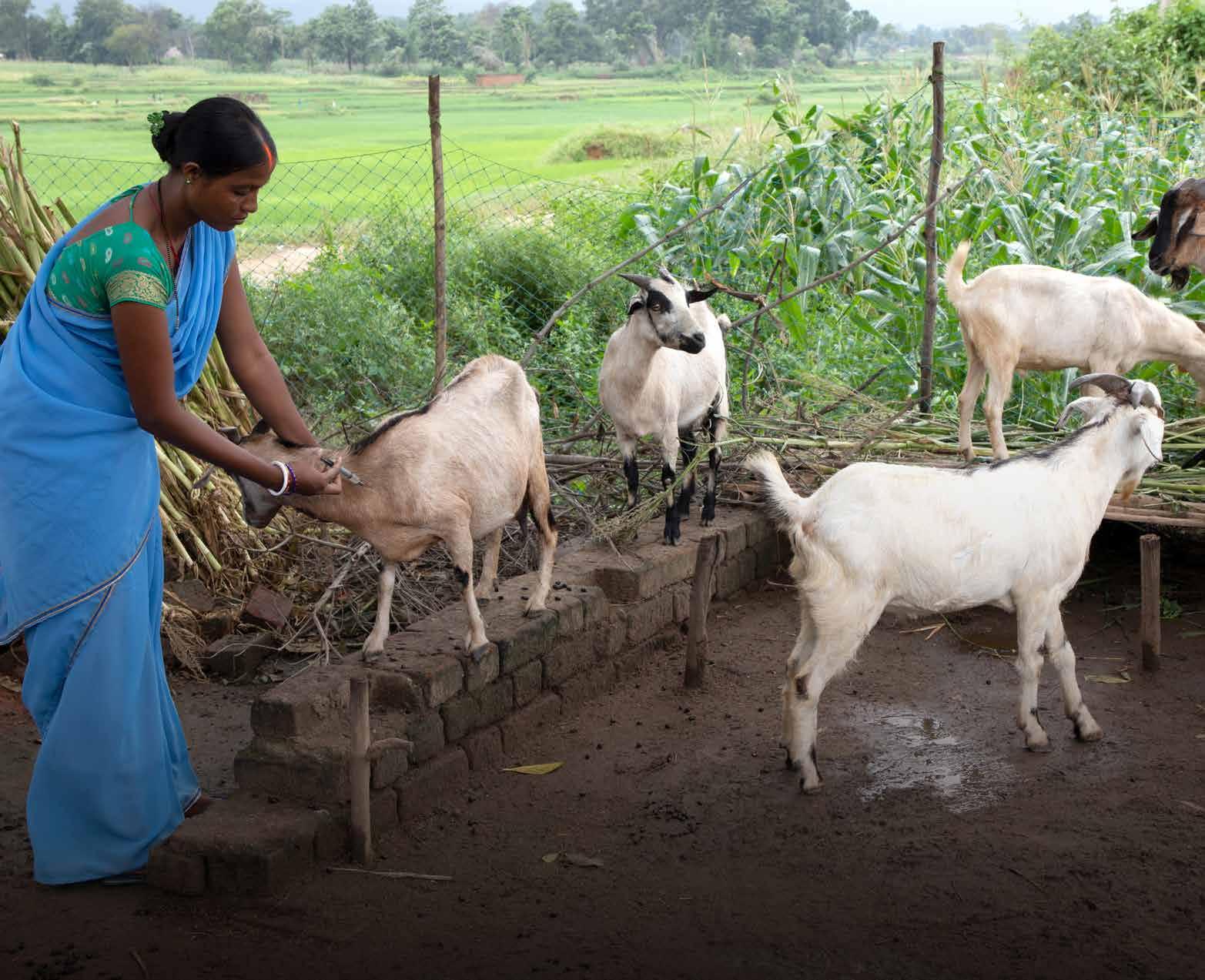
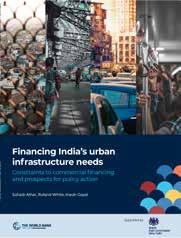






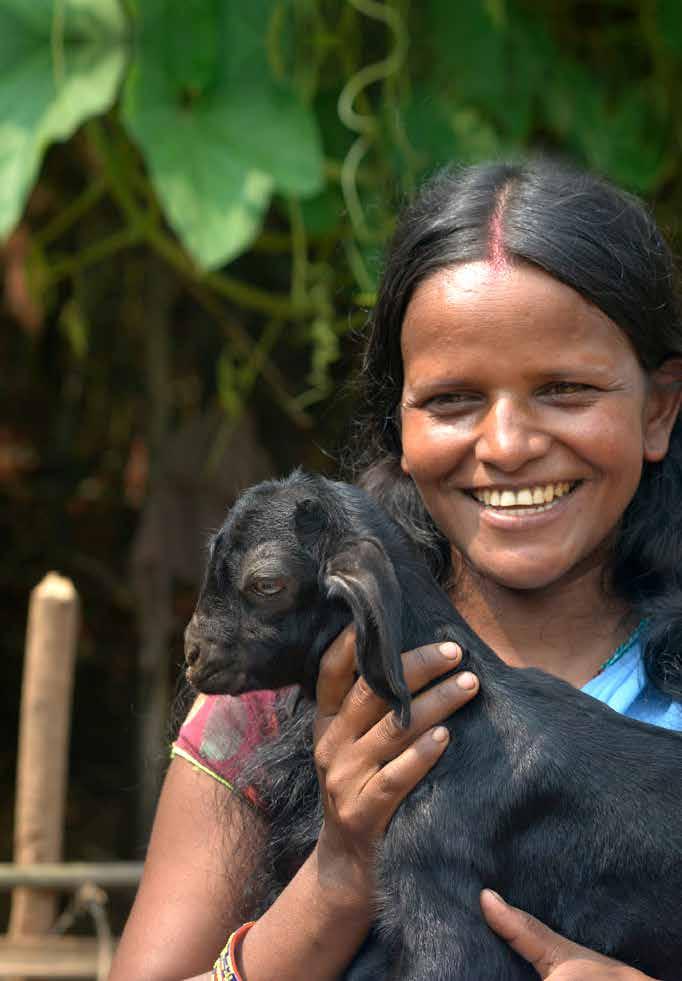
It’s a bright sunny September morning after almost a week of cloudy days and rain in village Tengariya situated in Gumla district in the central-eastern state of Jharkhand in India. Thirty-two-year-old Somati has just finished cleaning the house, sent off her two children to school, and feeding her in-laws and husband. She quickly changes into her uniform – a blue sari, an apron of matching color, puts on a hat, and walks quickly, carrying a smartphone and a cool box, to the houses at the eastern side of the village, which is where she will be spending the next four-five hours.
Somati is a trained Pashu Sakhi which literally translates to friend of the animals. She visits around 10 families that own livestock, mostly goats, and helps them with timely animal health check-up including vaccinations, deworming and first aid. She advises them about livestock hygiene, breeding and feeding, how to keep the farm clean and how to manage animal waste appropriately.

“My husband and I owned four goats and did not have any knowledge on their upkeep, feeding and breeding. The goats were also a meagre livelihood and we struggled to make ends meet,” says Somati. “Now, with my training, not only am I able to take care of my own livestock well, but I can also help others in need.”
Somati, who has studied till grade 8 became a Pashu Sakhi in 2018, after undergoing a 30-day training program over seven-day tranches, organized under the governmentrun JOHAR project - the Jharkhand Opportunities for Harnessing Rural Growth – supported by the World Bank.
Working part time, Somati now earns about Rs 10,00020,000 per month as against Rs. 3000-5000 earlier. She feels proud as she can now contribute to the family income, independent from her husband’s. Two of her children now go to private school.
“I feel gratified when villagers refer to me as ‘Bakri doctor’ (a doctor of goats). I want to work even harder and double my income in the coming years.”
Somati Oraon, Pashu Sakhi, Tengariya, Gumla District, Jharkhand
Jharkhand’s livestock production is in the hands of marginal and landless farmers with women accounting for over 70 percent of the production. Over the past decade, prices of meat and eggs have risen by almost 70-100 percent across the country. But livestock farmers in the low-income state of Jharkhand were unable to use the opportunity to increase their income. They had inadequate information on managing livestock, and limited access to quality healthcare and support in breeding. The ratio of veterinarians to livestock in the state was among the lowest in the country and were constrained with limited resources and services.
As a result, mortality among livestock were high - over 30 percent in goats, and about 80 percent in pigs and poultry, which led to low production of eggs and meat. This in turn adversely affected farmer incomes with earnings as low as Rs. 800 per month.
The women in the farming community usually take care of raising and breeding livestock in the backyard of their homes. So, training the local women to be ‘Pashu Sakhis’ seemed to offer the most suitable model to improve livestock productivity and trade, and enhance farmer incomes.

Under the JOHAR project, these community animal health service providers are trained on how to take care of poultry, goats, pigs, and chicken. After the training, the Pashu Sakhis, not only provide advice on taking care of livestock, but also advise farmers on the economic benefits of rearing livestock for sale. They also connect them to producer groups and traders, helping them getting better access to markets to sell their produce.
Over 1000 Pashu Sakhis have been trained so far under the project and 70 percent of those trained have been certified by the Agriculture Skill Council of India (ASCI), thus guaranteeing a high common standard of services.
The Pashu Sakhis advise farmers on how to take care of livestock, and the benefits of rearing them for sale by connecting them to farmers groups and markets.
has become an entrepreneur, breeding and chicks and earns profit from their sale. As a Master Trainer, she travels to other districts training fellow livestock farmers.
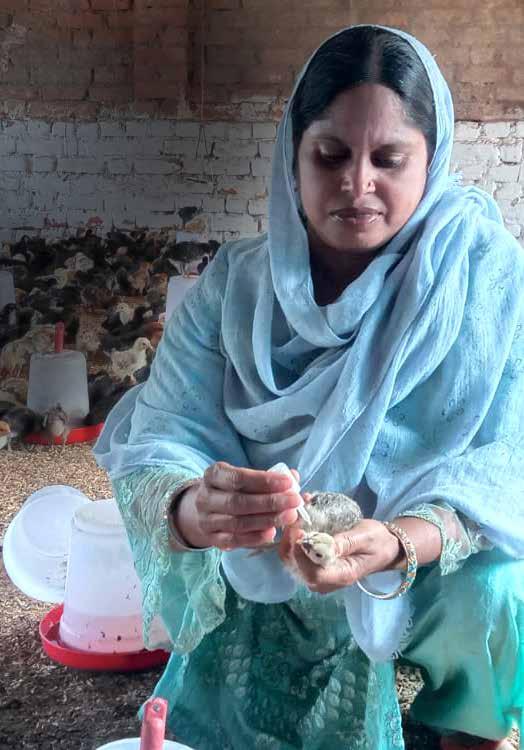
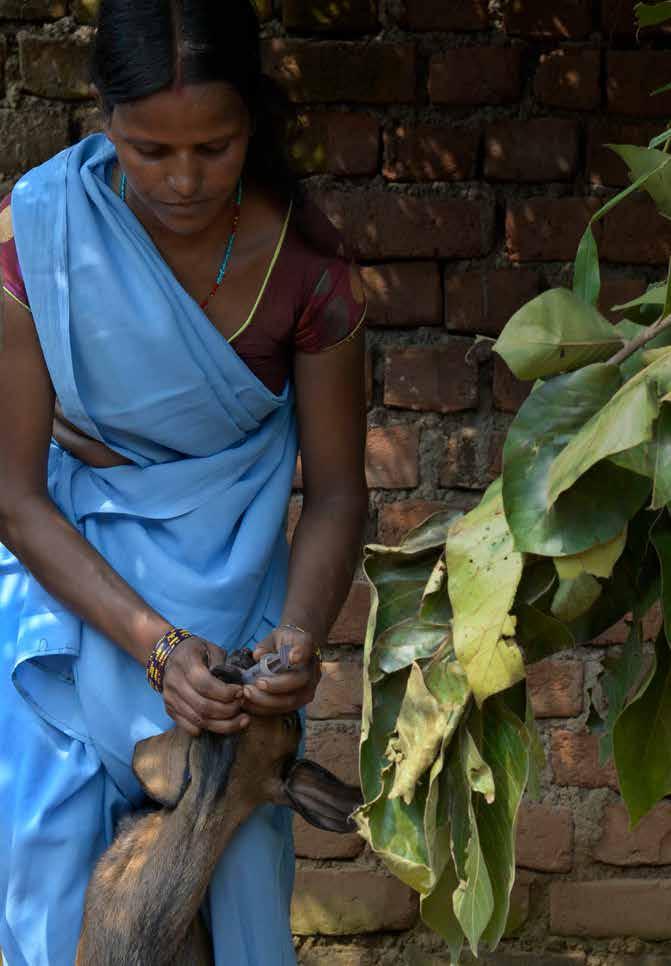
The World Bank-supported JOHAR project is helping nearly 57,000 beneficiary farmers of which 90 percent are women.
The Pashu Sakhis also organize regular field training for the farmers. Manju from Chitami village has been raising chicken for the past two years. After undergoing a short three-day training from a Pashu Sakhi in her village, Manju is now able to manage her poultry farm better. “We had no knowledge earlier of what the correct diet for the chickens was, or what to do when there was a disease outbreak,” she says. “Now I can handle small tasks on my own and when needed, call the Pashu Sakhi over phone if I need some urgent help.”
Pashu Sakhis also earn income as entrepreneurs selling services and inputs. Thirty-year-old Hasiba Khatun from village Khanbita in Ranchi district sells chicks to farmers. She breeds about 3000-4000 of them for which she earns close to Rs. 1 lakh in profit from their sale. She is also a Master Trainer having completed 45 days of additional training in livestock management. A graduate, Hasiba used to do odd sewing jobs earlier while raising her three children, adding only around Rs. 4000-5000 a month to the family income. As a Master Trainer, she often travels to other districts in the state. “I have been lucky enough to have the support of my husband throughout, as a Pashu
Sakhi earlier, and now as a Master Trainer. My training has also helped me increase my income exponentially,” she says .
The JOHAR project in Jharkhand has 29 such Master Trainers certified by ASCI.
The World Bank-supported JOHAR project is helping nearly 57,000 beneficiary farmers of which 90 percent are women.
An independent monitoring and evaluation assessment by UK’s Oxford Group has confirmed farmer incomes of over Rs. 45,000 a month from small backyard livestock production. This is an increase of over 55 to 125 times of average incomes before the JOHAR project.

The Pashu Sakhi model under JOHAR was recently selected by the UN Food and Agriculture Organization and the International Food Policy Research Institute as one of the top 8 global best practice models for farmer service delivery.
The $100 million Jharkhand Opportunities for Harnessing Rural Growth Project is helping farmers adopt climate-resilient agriculture practices; enhance their agricultural income by diversifying and improving farm productivity; promoting community-based micro irrigation; and supporting farmer producer groups to move into value added sectors like livestock, fisheries, and non-timber forest produce.

“The World Bank is pleased to support the Human Development agenda of the state of Gujarat through the SRESTHA-G Program. This Program will enhance access to traditional health services while supporting the state’s effort to open access to new ones, such as mental health and palliative care, thus contributing to improved health outcomes for the people of Gujarat.”
The World Bank approved a $350 million loan to improve the quality of and access to public healthcare services, with special focus on adolescent girls and disease surveillance in the state of Gujarat.
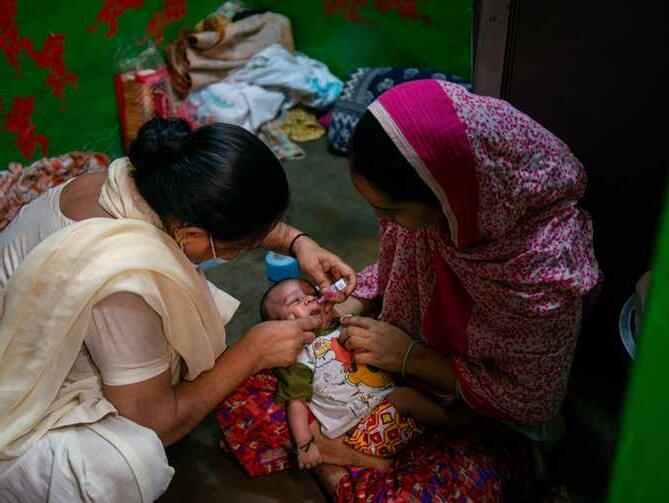
Currently, the state is delivering seven health services to its citizens including reproductive, maternal, newborn, child, and adolescent health, communicable and noncommunicable diseases (NCDs). The Systems Reform Endeavours For Transformed Health Achievement In Gujarat (SRESTHA-G) Program will enable more people access a wider range of high-quality health services and will further expand these to include mental health and elderly and palliative health services and also strengthen non-communicable services in the state.
The Program will:
• support a population-based screening process with help from local Accredited Social Health Activists (ASHA) and Auxiliary Nurse Midwives (ANM),
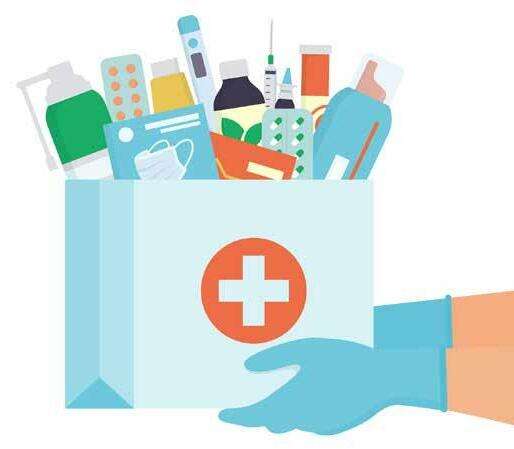
• people at high risk for non-communicable or other diseases will be encouraged to go to their assigned public healthcare provider.
• help the state develop surveillance systems for early detection of disease outbreaks.

• spearhead the “one health” agenda including combating anti-microbial resistance.
• Help in better management of resources, through improved collection and analysis of data, and through community engagement, that will assist in better decision-making.
The $350 million loan from the International Bank of Reconstruction and Development (IBRD) has a maturity of 18 years including a grace period of 5.5 years.
“Gujarat has a robust system of health service delivery at the primary, secondary and tertiary levels.” “The World Bank Program will support increased transparency and accountability of the health system through public reporting, and improved citizen engagement by implementing annual health assemblies or Swasthya Parishad. The Program will also introduce innovative ways to address adolescent health and nutrition related issues in the state.”
"The World Bank is pleased to be a partner of the state of Punjab in the state’s effort to deliver timely, cost-effective and good-quality public services, which is critical for inclusive development. This new project will support the implementation of the state’s new data policy, which aims to bring together various social protection initiatives and reduce potential leakages while delivering essential services.”
Auguste Tano Kouame World Bank’s Country Director for IndiaThe World Bank approved a loan of $150 million to the northern Indian state of Punjab to help the state better manage its financial resources and improve access to public services.
The Punjab: Building Fiscal and Institutional Resilience Program will support the state's efforts to strengthen the institutional capabilities of various government departments, manage fiscal risks and make informed policy choices to support sustainable growth.
The new project will support the state's development goals by:
a) Strengthening the planning, budgeting and monitoring functions.
b) Leveraging digital technology.
c) Increasing accountability in the public procurement systems by supporting state-wide implementation of new legal and policy reforms.
The project will pilot two initiatives:
1) Introduce a performance-based grants system to incentivize municipal corporations to improve service delivery.
2) Demonstrate the delivery of 24x7 water supply in select areas in the cities of Amritsar and Ludhiana. It will improve water delivery systems and reduce water leakages.

The success of these pilots will offer a significant potential for the state-wide scale-up of improved service delivery.
The $150 million loan from the IBRD has a maturity of 15 years including a grace period of 6 months.
“The project is using a ‘whole-ofgovernment’ approach which will ensure that various departments in the Punjab state government are linked so as to enhance their efficiency in managing public resources. Performance linked inter-governmental fiscal transfers will incentivize improved management of cities and service delivery to citizens,”

The Kerala floods lay bare the vulnerability of India’s transportation infrastructure to extreme weather events in an increasingly warming world. Resilient infrastructure is not just about the safe transfer of goods and services across roads, bridges, or railways. It is about the people, the households and the communities that depend upon these systems as a lifeline to better health, education, and secure livelihoods. The approach used in Kerala offers a roadmap for institutionalizing the concept of resilience planning across India’s road sector.
Read more: India's Road to Resiliency


A World Bank survey was conducted in early 2021 to assess the delivery of nutrition knowledge and services, and the adoption of more appropriate nutrition and feeding practices - the key desired outcomes of the Poshan Abhiyaan of the Government of India. The findings demonstrated that the services delivered through the POSHAN Abhiyaan led to improved nutrition behaviors.
Read more: The Poshan Abhiyaan
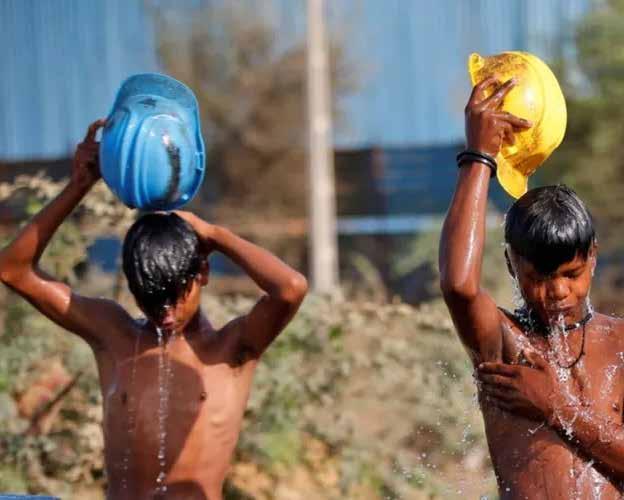
As urban populations grow and temperatures rise across South Asia, so too does the demand for cooling. Keeping citizens cool while mitigating the environmental impacts – air conditioners and other cooling equipment release powerful greenhouse gases – is a challenge for governments across South Asia, which must prioritize cooling as a development strategy. countries in the region must reimagine how infrastructure and services in sectors like housing, agriculture and health are delivered.

India’s Road to Resiliency: Why climate proofing India’s road network is vital to secure sustainable development
The POSHAN Abhiyaan improves the nutrition of pregnant women and young childrenDeepika Chaudhery, Chris Andersen, Rahul Pandey, Deepali Hariprasad, Mohini Kak

The World Bank is piloting a model called BETI (Business Enterprise Technology for Indian women), along with SEWA (Self-Employed Women’s Association), one of the world’s largest organizations of informal workers that promotes the rights of independently employed low-income women. Empowering women entrepreneurs is an economic priority that will bring considerable benefits to India’s economy. Already, India’s women own 13.5–15.7 million businesses, accounting for 20 percent of all the country’s enterprises.
Read more: Beti Kamao

Giving women borrowers in India the ‘credit’ that they deserve requires a comprehensive ecosystem that promotes convenience, provides genderappropriate modes of engagement, and considers the broader needs of women’s lives and businesses. This could lead not only to greater credit to women, but also to improved outcomes for society.

Read more: Improving women's access to credit in India
While India has reduced extreme poverty significantly – from 22.5 percent in 2011 to 10.2 percent in 2019 - the number of its ultra-poor remains larger than the total populations of Vietnam, Thailand or Germany. Perhaps the most widely known approach that provides a ‘big push’ to help the poorest of the poor escape extreme poverty is BRAC’s Ultra-Poor Graduation model. Since 2002, programs which run on the BRAC model or those directly implemented by BRAC have reached 14 million ultra-poor people across 50 countries, 95 percent of whom have pulled themselves out of extreme poverty.
Read more: 10 lessons to help India's poorest stand on their own feet



India will need to invest $840 billion over the next 15 years — or an average of $55 billion per annum — into urban infrastructure if it is to effectively meet the needs of its fast-growing urban population.
Only 5 percent of the infrastructure needs of Indian cities are currently being financed through private sources. With government’s current (2018) annual urban infrastructure investments topping at $16 billion, much of the gap will require private financing.
The new report recommends expanding the capacities of city agencies to deliver infrastructure projects at scale. Over the medium term, the report suggests a series of structural reforms including those in the taxation policy and fiscal transfer system - which can allow cities to leverage more private financing. In the short term, it identifies a set of large high-potential cities that can raise higher volumes of private financing.

Institutional Models for Governance of Urban Services : Volume 1 - Synthesis Report December 2021 (English)
The comparative research described in this report is meant to support the development of options for more effective urban service delivery in India. The primary audience for this work will be found in state and Urban Local Body governments in India, though the topic also may be of interest in academic, media, and civil society circles. In this report, the authors compare institutional models for managing specific services in two American cities, two South African cities, and four Indian cities.
Toolkit for Enabling Gender Responsive Urban Mobility and Public Spaces : Volume 1 - The ‘What-To-Do’ Note for Policymakers
Toolkit for Enabling Gender Responsive Urban Mobility and Public Spaces : Volume 2 - The ‘How-To’ Guide - Practical Tools for Implementing Agencies
This toolkit is intended to be a practice guide towards introducing gender equality and women’s empowerment principles in designing urban mobility systems and public spaces so that they mitigate rather than reinforce gender inequalities. The toolkit is divided into two volumes, with the first volume focused on high level guidance for policymakers, while the second provides a ‘How-to’ guide including practical tools for implementing agencies.
Streamlining Grievance Redressal Mechanisms : Detering Sexual Harassment on Public Transport and Urban Spaces - A Guidance Brief Based on the Toolkit for Enabling Gender Responsive Urban Mobility and Public Spaces
Evidence from Indian cities shows that while the prevalence of sexual harassment on public transport and in public spaces is high, reporting, and subsequent actions taken for redressal are perceived to be low. The multiplicity of redressal systems also discourages women from reporting incidents of sexual harassment. Thus, ensuring an efficient, unified grievance redressal system, which is easy to use for consumers, anonymous and integrates with ongoing efforts for prevention of violence against women is essential for urban local bodies and public transport authorities.
From Audits to Action : Making public transport and urban spaces safer for women - A Guidance Brief Based on the Toolkit for Enabling Gender Responsive Urban Mobility and Public Spaces
The lack of safe public transport options deters women from choosing promising employment and educational opportunities. Improving safety standards in public transportation and public spaces requires a collaborative effort from city authorities, front line staff, duty bearers, the general public, and users of public transportation. While public authorities and implementing agencies bear the majority of the responsibility for implementing interventions, the general public also has an important role to play in making public transportation and public spaces safer for women by becoming more aware, participative, and responsive.
Women are amongst the biggest users of public transport across Indian cities. Public transport usage is even higher amongst women from lower income groups, who typically have lower discretionary income. Faced with challenges ranging from transportation services that prioritize commuting over care giving, to the lack of lighting and toilets in public spaces, many women feel inconvenienced, ill-at-ease, and unsafe in the urban environment. Implementing agencies could rely on gender disaggregated data to drive decision making for creating gender responsive public transport systems.
WPS10199
This paper experimentally tests the effectiveness of two short edutainment campaigns (under 25 minutes) delivered through Facebook Messenger at reshaping
gender norms and reducing social acceptability of violence against women in India. In the medium term, individuals who were exposed to the docuseries were more likely to add a frame against violence against women in their Facebook profile picture, a public display of their disapproval of this harmful practice. The general lack of heterogeneous effects across social status indicators suggests social media as a potential medium for reaching different online populations, including vulnerable ones.
Despite growing awareness of the various limitations of electoral democracy, there is a relative lack of evidence on effective policy interventions to improve the performance of elected officials and motivate them to act more equitably. The paper shows that the results are consistent with a theoretical model where imperfect voter information drives inequities in resource allocation, and interventions that provide credible information on politician quality motivate elected representatives to act more equitably.

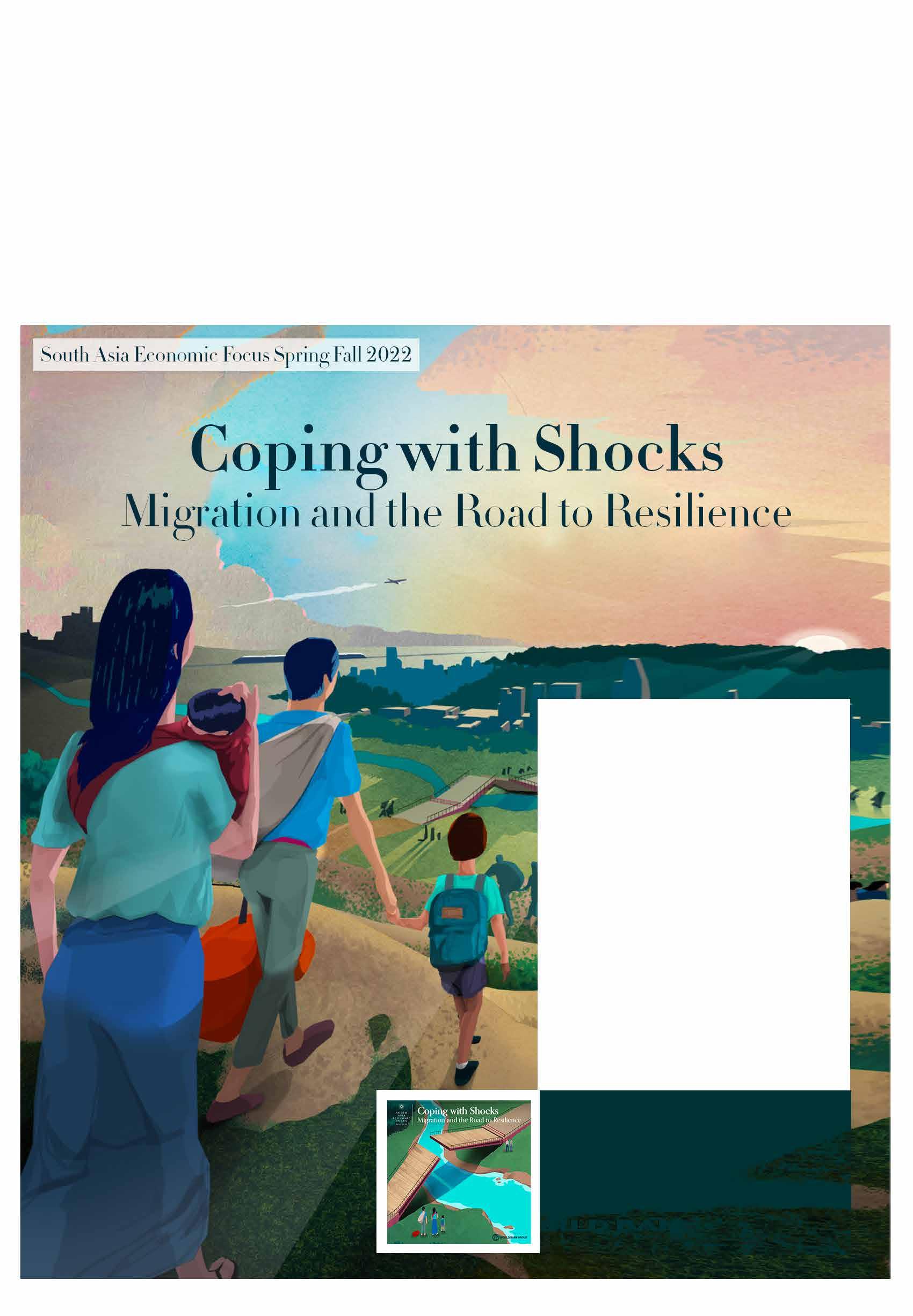
South Asia is facing renewed challenges. The impact of the Russia-Ukraine war on food and energy prices on domestic inflation is long-lasting. Externally, countries’ current account balances deteriorate rapidly as imports rise on the back of economic recovery and rising inflation, remittanaces decline, and foreign capital flows out following monetary tightening in advanced economies. Apart from the economic slowdown, pandemic changed the flows of migration. The report studies long-run trend of migration in the South Asia region and proposes policies to address underlying problems.
In #India, exports and the services sector have recovered more strongly than the world average while its ample foreign reserves served as a buffer to external shocks.
Inflation in #SouthAsia, caused by elevated global #food and #energy prices and trade restrictions that worsened #foodinsecurity in the region, is expected to rise to 9.2% this year.
Poverty and Shared Prosperity 2022 : Correcting Course
Poverty and Shared Prosperity 2022: Correcting Course provides the first comprehensive analysis of the pandemic’s toll on poverty in developing countries. It identifies how governments can optimize fiscal policy to help correct course. By bringing together the latest evidence, this corporate flagship report provides a foundation for informed advocacy around ending extreme poverty and improving the lives of the poorest in every country in the world.
such as the global financial crisis of 2008–2009, can say about of the resilience of GVC firms to shocks; Examines what high-frequency data on trade flows can show about the impact of COVID-19 during the sharp global recession of 2020.

Macro Poverty Outlook Annual Meetings 2022: Country-bycountry Analysis and Projections for the Developing World


This edition of the Macro Poverty Outlook Annual Meetings 2022 contains country-by-country forecasts and overviews for GDP, fiscal, debt and poverty indicators for developing countries. Macroeconomic indicators such as population, gross domestic product and gross domestic product per capita - and where available – other indicators such as primary school enrollment, life expectancy at birth, total greenhouse gas emissions and inflation, among others, are included for each country. In addition to the World Bank’s most recent forecasts, key conditions and challenges, recent developments and outlook are briefly described for each country.

Reshaping Global Value Chains in Light of COVID-19: Implications for Trade and Poverty Reduction in Developing Countries
Global value chains (GVCs) have driven dramatic expansions in trade, productivity, and economic growth in developing countries over the past three decades. The book assesses what the impact of previous crises,
The main purpose of this study is to assess how intergovernmental fiscal transfers affect public funding for education and how they ultimately affect student schooling and learning outcomes. Through a careful analysis of how fiscal transfers have affected education systems in different contexts, the investigation develops a set of principles to support improvements in the design and implementation of transfer systems with a specific focus on the provision of education services.
Commodity Markets Outlook, October 2022: Pandemic, War, Recession : Drivers of Aluminum and Copper Prices
A sharp global growth slowdown and concerns about an impending global recession are weighing on commodity prices. Some energy prices remain elevated, however, amid geopolitical tensions and persistent supply disruptions. Since March 2022, a steep global growth slowdown, an unwinding of supply constraints, and concerns about an imminent global recession contributed to the plunge in metal prices. It concludes that for metal exporters, the energy transition may bring windfalls, but it could also increase their exposure to price volatility.
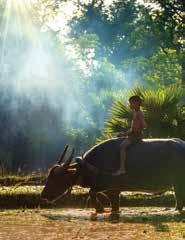
COVID-19 reinforced the interconnections between people, planet and economy, calling attention to the zoonotic nature of pathogens spilling over from animals to people. To decrease their burden, we must focus on prevention. One Health provides a solid foundation for global health security and improved development outcomes at much lower societal and economic costs. This report aims to shed light on the benefits of prevention to serve as a wake-up call for policymakers and finance ministers alike.
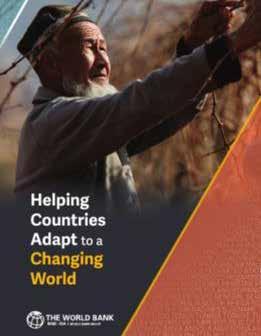
The Annual Report is prepared by the Executive Directors of the International Bank for Reconstruction and Development (IBRD) and the International Development Association (IDA)--collectively known as the World Bank--in accordance with the by-laws of the two institutions. The President of the IBRD and IDA and the Chairman of the Board of Executive Directors submit the Report, together with the accompanying administrative budgets and audited financial statements, to the Board of Governors.
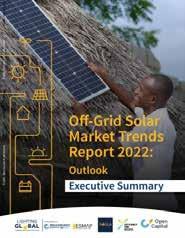
This report aims to survey the outlook for the off-grid solar market and interventions needed for the sector to achieve its full potential impact. The report discusses what it will take for the sector to achieve its primary development goals, assesses the gap between that benchmark and the sector’s current trajectory, discuss the game changers that are needed to propel the sector to ultimately reach its development potential and summarize the roles of key sector stakeholders in actualizing those game changers to achieve universal access.
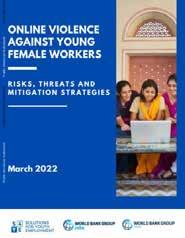

Digital transformation is creating new job opportunities, especially for women, who are able to work from home and overcome time and mobility constraints. However, digital technologies also bring new risks, one of these is online violence increasing the likelihood that young women forgoing or leaving digital jobs. This brief presents emerging evidence of the scale of such problems in low- and middleincome countries and their impact on the participation of young women in digital sectors and outlines suggested policy responses.
The report aims to support policy makers in their efforts to address plastic pollution. By examining the economic and financial implications of plastic management, the report provides key recommendations on how to create a comprehensive approach to addressing plastic pollution and to help policy makers make informed decisions for plastic pollution management.
This report provides new data on trade in medical goods and services and medical value chains; surveys the evolving policy landscape before and during the pandemic; and proposes an action plan to improve trade policies and deepen international cooperation to deal with future pandemics.
WPS10219
Is International Trade Always Beneficial to Labor Markets?A Case Study from Egypt
Raymond Robertson, Mexico Vergara and Gladys Lopez-Acevedo
WPS10218
Learning Losses during COVID-19:Global Estimates of an Invisible and Unequal Crisis

João Pedro Azevedo, Maryam Akmal, MarieHelene Cloutier and et.al.
WPS10217
The True Cost of War
Erhan Artuc, Nicolas Gomez-Parra and Harun Onder
WPS10216
Higher Levels of No-Till Agriculture Associated with Lower PM2.5 in the Corn Belt
A. Patrick Behrer and David Lobell
WPS10215
The Evolution of Maternity and Paternity Leave Policies over Five Decades — A Global Analysis
Marie Hyland and Liang Shen
WPS10214
Electoral Cycles and Public Spending during the Pandemic
Michael Lokshin, Aylén Rodriguez-Ferrari and Iván Torre
WPS10213
Exports and Labor Demand:Evidence from Egyptian Firm-Level Data
Claudia N. Berg, Raymond Robertson and Gladys Lopez-Acevedo
WPS10212
Radical Climate Policies
Frederick van der Ploeg and Anthony J. Venables
WPS10211
Trade Agreements in South Asia:Towards a Successful Story in the Developing World
Sebastian Franco-Bedoya
WPS10210
Impact of High Inflation on Household Livelihoods in Urban South Sudan
Alvin Etang, Thierry Hounsa and Utz Pape
WPS10209
Identifying the Poor — Accounting for Household Economies of Scale in Global Poverty Estimates
Dean Jolliffe and Samuel Kofi Tetteh Baah
WPS10208
Understanding Informality:Comprehensive Business-Level Data and Descriptive Findings
Adam Aberra, Gemechu Aga, Filip Jolevski and et.al.
WPS10207
Should
Debabrata Chattopadhyay and Adam Krzysztof Suski
WPS10206
Job Tenure and Structural Change in the Transition Economies of Europe
Maurizio Bussolo, Michael M.Lokshin, Nicolás Oviedo and et.al.
WPS10205
Explaining the Evolution of Job Tenure in Europe, 1995–2020
Maurizio Bussolo, Damien Fierre Jean Capelle, Michael M. Lokshin and et.al.
WPS10204
Toward a Competitive Air Transport Market in Africa: The Role of Bilateral Air Service Agreements Liberalization
Anca Diana Cristea, Megersa Abera Abate and Daniel Alberto Benitez
WPS10203
Central America’s Deindustrialization Rishabh Sinha
WPS10202
Machine Learning Guided Outlook of Global Food Insecurity Consistent with Macroeconomic Forecasts
Bo Pieter Johannes Andree
WPS10201
Impacts of Transparent Online Auctions on Public Land Lease Revenue: Evidence from Legal and Administrative Changes in Ukraine
Klaus W. Deininger, Daniel Ayalew Ali and Roman Neyter
WPS10200
Structural Loopholes in Sustainability-Linked Bonds
Imtiaz Ul Haq and Djeneba Doumbia
WPS10199
Using Social Media to Change Gender Norms: An Experiment within Facebook Messenger in India
Dante Donati, Victor Hugo Orozco Olvera and Nandan Mark Rao
WPS10198
The Impact of COVID-19 on Global Inequality and Poverty
Daniel Gerszon Mahler, Nishant Yonzan and Christoph Lakner
WPS10197
Gender Differences in Socio-Emotional Skills and Economic Outcomes: New Evidence from 17 African Countries
Kehinde Ajayi, Smita Das, Clara Anne Delavallade, and et.al.
WPS10196
Estimating the Impacts of Transport Corridor Development in Kazakhstan: Application of Dynamic Panel Data Models to Firm Registry Data
Atsushi Iimi
WPS10195
The Haves and the Have Nots: Civic Technologies and the Pathways to Government Responsiveness
Jonathan Mellon, Tiago Carneiro Peixoto and Fredrik Matias Sjoberg
Electricity Market Designs Be Improved to Drive Decarbonization?
WPS10194
The Impact of Protracted Displacement on Syrian Refugees in Jordan: The Evolution of Household Composition and Poverty Rates
Julieth Santamaria, Lucia C. Hanmer and Eliana Carolina Rubiano
WPS10193
Caring for Children and Firms? The Impact of Preschool Expansion on Firm Productivity
Massimiliano Cali, Hillary C. Johnson, Elizaveta Perova and et.al.
WPS10192
From Financial Development to Informality: A Causal Link
Salvatore Capasso, Franziska Lieselotte Ohnsorge and Shu Yu
WPS10191
COVID-19 Vaccine Hesitancy in 53 Developing Countries: Levels, Trends, and Reasons for Hesitancy
Julia M. Dayton, Ifeanyi Nzegwu Edochie, David Locke Newhouse and et.al.
WPS10190
The Distributional Impact of Taxes and Social Spending in Bhutan: An Application with Limited Income Data
Juan Pablo Baquero, Jia Gao and Yeon Soo Kim
WPS10189
When the Lights Go Out: The Economic Impacts of Covid-19 on Cities Globally
Amjad Muhammad Khan, Hogeun Park, Mark Roberts and et.al.
WPS10188
The Impact of Paid Maternity Leave on Women’s Employment: Evidence Using Firm-Level Survey Data from Developing Countries
Mohammad Amin, Asif Mohammed Islam
WPS10187
Early Education, Preferences, and DecisionMaking Abilities
Joana Cardim, Pedro Carneiro, Leandro S. Carvalho and et.al.
WPS10186
Money versus Kudos: The Impact of Incentivizing Local Politicians in India
Ghazala Mansuri, Nethra Palaniswamy, Vijayendra Raoand et. al.
WPS10185
Climate Policy and Inequality in Urban Areas: Beyond Incomes
Charlotte Liotta, Paolo Avner, Vincent Viguié and et.al.
WPS10184
Impacts of COVID-19 on the Income and Mental Well-Being of Cismen, Ciswomen, Transgender, and Non-Binary Individuals: Evidence from the 2020 COVID-19 Disparities Survey
Tanima Ahmed, Toni Joe Lebbos, Sean Howell and et.al.
WPS10183
Missing Information: Why Don’t More Firms Seek Out Business Advice?
Miriam Bruhn and Caio Piza
WPS10182
Increasing Tax Collection in African Countries: The Role of Information Technology
Oyebola Motunrayo Okunogbe and Fabrizio Santoro
WPS10181
The Role of Green Financial Sector Initiatives in the Low-Carbon Transition: A Theory of Change
Irene Monasterolo, Antoine Mandel, Stefano Battiston and et.al.
WPS10180
Return Migration and Labor Market Outcomes: Evidence from South Asia
Laurent Loic Yves Bossavie and He Wang
WPS10179
Capturing Sensitive Information from Difficult-to-Reach Populations: Evidence from a Novel Internet-Based Survey in Yemen
Sharad Alan Tandon and Tara Vishwanath
WPS10178
Are Subjective Questions on Welfare Appropriate during Crises? Evidence from the Onset of Conflict in the Republic of Yemen
Sharad Alan Tandon
WPS10177
How Does Violence Force Displacement during Active Conflict? Evidence from the Republic of Yemen
Anna D'Souza, Eliana Favari, Siddharth Krishnaswamy and et.al.
WPS10176
Consequences of Forced Displacement in Active Conflict: Evidence from the Republic of Yemen
Anna D'Souza, Eliana Favari, Siddharth Krishnaswamy and et.al.
WPS10175
Small Area Estimation of Monetary Poverty in Mexico Using Satellite Imagery and Machine Learning
David Locke Newhouse, Joshua David Merfeld, Anusha Pudugramam Ramakrishnan and et.al.
WPS10174
Is Social Protection a Luxury Good?
Michael M. Lokshin, Martin Ravallion and Ivan Torre
WPS10173
Multiple Price Lists for Willingness to Pay Elicitation
B. Kelsey Jack, Kathryn McDermott and Anja
WPS10172
Revisiting Poverty Trends and the Role of Social Protection Systems in Africa during the COVID-19 Pandemic
Kibrom A. Abay, Nishant Yonzan, Sikandra Smith Kurdi and et.al.
WPS10171
How Accurate Is a Poverty Map Based on Remote Sensing Data? An Application to Malawi
Roy Van Der Weide, Brian Blankespoor, Chris T.M. Elbers and et.al.
WPS10170
Intra-Household Inequality in Food Consumption and Diets in the Philippines Dizon, Felipe Jr Fadullon, Josephson, Anna Leigh, Wang, Zetianyu
WPS10169
Poverty and Violence: The Immediate Impact of Terrorist Attacks against Civilians in Somalia Gonzalo Ignacio Nunez and Utz Johann Pape
WPS10168
From Necessity to Opportunity: Lessons for Integrating Phone and In-Person Data Collection for Agricultural Statistics in a PostPandemic World
Alberto Zezza, Kevin Robert Mcgee, Philip Randolph Wollburg and et. al.
WPS10167
How Does the Progressivity of Taxes and Government Transfers Impact People’s Willingness to Pay Tax? Experimental Evidence across Developing Countries
Christopher Alexander Hoy
WPS10166
Protect Incomes or Protect Jobs? The Role of Social Policies in Post-Pandemic Recovery
Asli Demirgüç-Kunt, Michael M. Lokshin and Ivan Torre
WPS10165
Inferring COVID-19 Vaccine Attitudes from Twitter Data: An Application to the Arabic Speaking World Roy Van Der Weide
WPS10164
Massive Modularity: Understanding Industry Organization in the Digital Age — The Case of Mobile Phone Handsets
Eric Thun, Daria Taglioni, Timothy J. Sturgeon and et.al.
WPS10161
Do Index Insurance Programs Live Up to Their Promises? Aggregating Evidence from Multiple Experiments
Pauline Castaing and JulesGazeaud
WPS10160
Healthy and Sustainable Diets in Bangladesh
Divya Mehra, Junying Tong, Felipe Jr Fadullon Dizon and et. al.
WPS10159
Bribery, Plant Size and Size Dependent Distortions
Mehmet Nazim Tamkoc
WPS10158
Informal Emissions
Constantin Rudolf Salomo Burgi, Shoghik Hovhannisyan, Santosh Ram Joshi and et. al.
WPS10156
Overland Transport Costs: A Review Ahmet KeremCosar
WPS10155
The Social Tax: Redistributive Pressure and Labor Supply
Eliana Carranza, Aletheia Amalia Donald, Florian Grosset and et.al.
WPS10154
The Local Economic Effects of Natural Resources: Evidence from Ghana
Josephine Adofo, Nori Tarui and Tomomi Tanaka
WPS10153
The Impact of Gas Flaring on Child Health in Nigeria
Omoniyi Babatunde Alimi and John Gibson
WPS10152
Turning COVID-19 Vaccines into Vaccinations: New Evidence from Sub-Saharan Africa
Philip Randolph Wollburg, Yannick Valentin Markhof, Shelton Sofiel Elisa Kanyanda and et. al.
WPS10151
How Regulation and Enforcement of Competition Affects ICT Productivity: Evidence from Matched Regulatory-Production Surveys in Peru’s ICT Sector
Tanida Arayavechkit , Charl Jooste and Ana Urrutia Arrieta
WPS10150
Good Enough for Outstanding Growth: The Experience of Bangladesh in Comparative Perspective
Robert C. M. Beyer and Konstantin M. Wacker
WPS10149
The Analysis of Inequality in the Bretton Woods Institutions
Francisco H.G. Ferreira
WPS10145
The Macroeconomic Effects of Macroprudential Policy: Evidence from a Narrative Approach
Diego Rojas, Carlos Vegh and Guillermo Vuletin
WPS10144
Delivery Challenges and Development Effectiveness: Assessing the Determinants of World Bank Project Success
Daniel Ortega Nieto, Ariya Hagh and Vivek Agarwal
WPS10142
Social Norms and Gender Equality: A Descriptive Analysis for South Asia
Maurizio Bussolo, Jessy Amarachi Ezebuihe, Ana Maria Munoz Boudet and et.al.
WPS10138
The Psychosocial Value of Employment: Evidence from a Refugee Camp Reshmaan Hussam, Erin M. Kelley, Gregory Lane and et.al.
WPS10137
PPP Distress and Fiscal Contingent Liabilities in South Asia
Matías Herrera Dappe, Martin Melecky and Burak Turkgulu
The World Bank The Hindustan Times House (Press Block)
18-20, Kasturba Gandhi Marg New Delhi - 110 001, India
Contact: Sunita Malhotra Email: smalhotra@worldbank.org Tel: +91-11-49247753
Media Inquiries
The World Bank 70, Lodi Estate New Delhi - 110 003
Email: mediaindia@worldbank.org Tel: +91-11-4147 9220
For more Information
Global: www.worldbank.org India: www.worldbank.org/in Facebook: WorldBankIndia Twitter: @worldbankindia
Rights and Permissions: The material in this work is copyrighted. No part of this work may be reproduced or transmitted in any form or by any means, electronic or mechanical, including photocopying, recording, or inclusion in any information storage and retrieval system, without the prior written permission of the World Bank. The World Bank encourages dissemination of its work and will normally grant permission promptly.